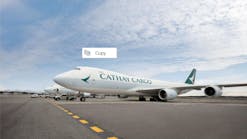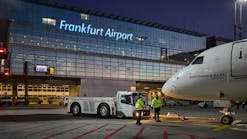Nov. 09--Travelers passing through Baltimore-Washington International Thurgood Marshall Airport will see extensive changes over the next two years as officials launch a $100 million renovation project that will transform the central section of the airport -- including parts that date to its opening in 1950.
The project, set to begin next year and to be finished in summer 2013, will allow passengers to move among concourses A, B and C without having to pass through security a second time. It will also replace a narrow checkpoint with a much larger one, which is expected to help relieve congestion during busy travel periods.
BWI's executive director, Paul J. Wiedefeld, said Tuesday that the Maryland Aviation Administration would soon take the expansion plan to the state Board of Public Works for approval.
"It's to continue to maintain our brand as the easy-come, easy-go airport," Wiedefeld said of the expansion plan. "It's about positioning the airport for future growth."
Wiedefeld outlined the airport's plans at a time when BWI is finishing changes being made to accommodate AirTran's move from the central D Concourse to Southwest Airline's A and B concourses -- a step toward the full merger of the two airlines.
AirTran is scheduled to move its ticket counters, gates and baggage-handling operations to the Southwest terminal by the morning of Nov. 16.
Southwest completed its merger with AirTran in May, but the two airlines will keep their own names and signage while Southwest awaits permission from the Federal Aviation Administration to operate as a single carrier.
Southwest is by far BWI's largest carrier, while AirTran is No. 2. Wiedefeld said BWI would be the combined airlines' busiest hub.
As part of the AirTran move, BWI is expanding its security facilities in the A/B Concourse -- the part of the airport on a driver's right when entering the loop. As a temporary measure, the airport is installing four additional security checkpoints on the ground floor where passengers pick up their baggage. AirTran's baggage pickup will be consolidated at Carousel 6, next door to Southwest.
During a tour Tuesday, Wiedefeld pointed to recently installed counters in the Southwest terminal. For now there is only a Southwest kiosk, but Wiedefeld said AirTran kiosks would join them next week.
About a month after AirTran moves to take up some of the current Southwest counters, Delta Airlines will move to AirTran's former space. The current Delta counter near Concourse B will be converted to a new checkpoint -- the airport's largest -- as part of the $100 million project.
Wiedefeld said the current checkpoint at Concourse C -- in the 60-year-old central section of what was once Friendship International Airport -- is cramped, with room for only six security lines. Unlike the other concourses, it is equipped with older, magnetic-resonance screening machines because it is too small to accommodate the advanced imaging machines that the Transportation Security Administration now uses as its standard screening technology.
The expanded checkpoint will have nine security lines and enough space to use imaging technology, Wiedefeld said.
The terminal expansion and renovation will be the most significant at the airport since the opening of the $288 million Southwest terminal in 2005. That expansion set the stage for the airport's growth in recent years. BWI had its busiest month ever in July and saw a record 1.7 million passengers for the month of September.
Last year was BWI's best year ever, with 21.9 million travelers passing through the airport.
Wiedefeld said the airport was already running up against capacity constraints at the Southwest terminal.
"You're feeling constraints because there's growth," he said.
The renovations to the center section are part of BWI's plan to foster further growth, Wiedefeld said. As part of the project, BWI will add what it calls a "connector" on the airfield side of the existing building that will lead directly from the A/B Concourse to Concourse C.
Passengers moving between the 26 A/B gates to the 14 C gates now have to leave the security perimeter and go through screening again. When the new connector opens, they will be able to walk from one concourse to another -- or travel on a moving walkway -- without having to repeat the security check.
The plans call for the connector to slope downward in the middle to preserve the view from the airport's observation deck. Along its 900-foot length would be various shops and restaurants, Wiedefeld said.
The project will also widen C Concourse at the point nearest the checkpoint, where it now narrows to form a bottleneck before widening again.
Wiedefeld said that phase of the project would let the airport expand the holding space at several gates, allowing them to accommodate larger jets.
Wiedefeld said the airport was paying for the renovation project. The airport earns money primarily from airline landing rights and gate leases, rents paid by concessionaires, parking fees and advertising.
In the future, Wiedefeld said, BWI officials plan to extend connectors to the D and E terminals -- making it possible for travelers to move from one end of the airport to another within what is known as the "sterile" area, where all of the occupants have passed through security.
Wiedefeld said the plan to connect all of the concourses within the secure zone was important for an airport that prides itself on its compact size.
Unlike many large-city airports, BWI is contained in a single building and does not require passengers to take a subway or shuttle bus to move between terminals.
"It's very efficient for the businesses, and I think it's very efficient for the customers," he said.
Copyright 2011 - The Baltimore Sun




